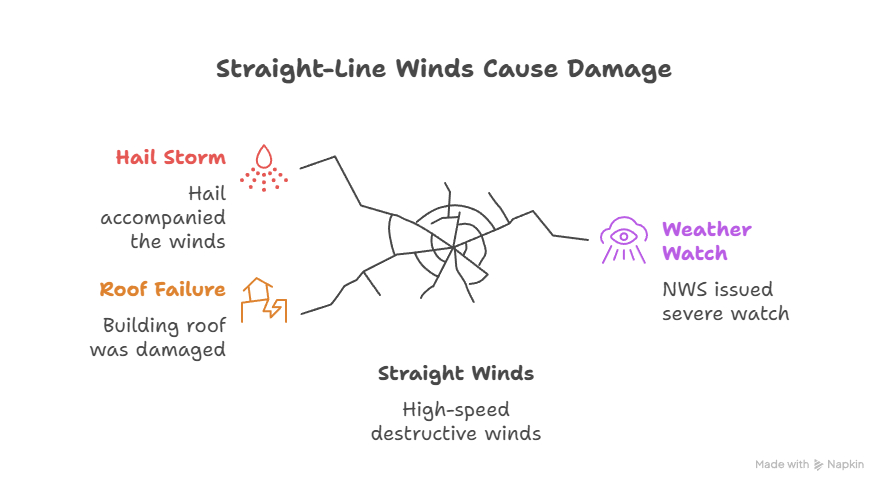A strong line of severe storms swept through northern Denton County on September 21, 2025, causing significant damage across Sanger and the surrounding area. One of the hardest-hit structures was the Walmart distribution center off I-35, where ferocious winds ripped open a 45–50 foot section of roof, exposing the inside of the massive building to the storm.
Were you Injured? Get Help Now
If you or a loved one has been injured and need experienced legal help, contact Joe I. Zaid & Associates today. You can call (346) 756-9243 to schedule a free consultation. With no fees unless they win, Joe I. Zaid & Associates stands ready to fight for the results you deserve.
What Caused the Roof Collapse?
Initial concerns about a possible tornado were dispelled after early assessments from the National Weather Service (NWS). Meteorologists determined that destructive straight-line winds—rather than a tornado—were responsible for the roof failure and other area damage. These winds, which can rival tornadoes in force, swept through the region at speeds estimated to exceed 70 mph. They also brought hail and prompted a prolonged severe weather watch by the NWS. No employees were injured in the incident, and everyone was sent home safely after the building was evacuated.
Wider Impacts Across the Area
The Walmart warehouse was not the only site affected. Just across the highway, several RVs at a local campground were overturned, tragically resulting in the death of a resident who later succumbed to her injuries. The storm’s ferocity also disrupted regional transportation: three 18-wheelers were flipped on northbound I-35E at Ganzer Road, temporarily shutting down traffic and stretching emergency resources. Local emergency teams activated their operations center to help coordinate the fast-evolving response.
These events highlight that dangerous storm impacts aren’t limited to tornadoes. Straight-line winds can cause extensive property damage, cripple transportation corridors, and present serious risks to roadside and industrial operations alike. Warehouses and distribution centers, with their large, flat roofs and high exterior walls, are particularly vulnerable to uplifting wind forces when building envelopes are breached.
Public Safety and Preparedness Lessons
What does this mean going forward for public safety and business continuity? Facilities like warehouses should treat straight-line wind threats with the same urgency as tornado warnings. Regular roof inspections, tight control of internal pressure (by keeping doors and windows closed), and clear emergency communication plans are all vital steps. In addition, early evacuation or sheltering can minimize the risk to workers.
After an incident, it’s important to avoid re-entering damaged facilities before they’re inspected for structural stability, gas leaks, or electrical hazards. Anyone who suffered injuries or property loss should promptly document damages, report issues to the appropriate authorities or facility management, and consult with insurers or legal resources if claims or compensation might be warranted.
Key Takeaways
- The collapse at Walmart’s Sanger warehouse was part of a broader destructive wind event in Denton County—not a tornado, but damaging straight-line winds.
- No workers were injured at the distribution center, but the community tragically lost a life when RVs were flipped nearby.
- Wide-scale wind emergencies can disrupt industry, transportation, and residential life simultaneously, underscoring the need for comprehensive severe weather planning and response.
For more detailed information about this event, visit the coverage from NBC DFW and KERA News.


